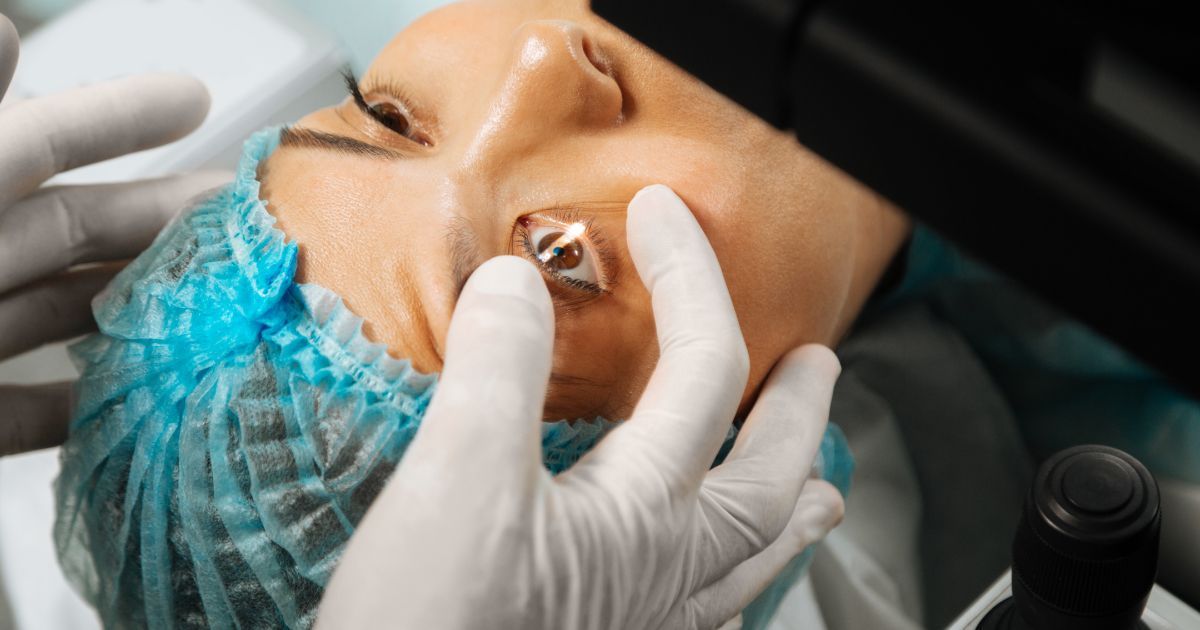LASIK vs. PRK: Which Vision Correction Surgery Is Right for You?

Read Time: 5 minutes
Are you tired of relying on glasses or contacts to achieve clear vision? With numerous vision correction options available, choosing the right procedure for your unique needs can be an overwhelming task. Two leading methods of vision correction surgery are LASIK (Laser-Assisted in Situ Keratomileusis) and PRK (Photorefractive Keratectomy). Both procedures use advanced laser technology to reshape the cornea, effectively reducing dependency on eyewear.
In this article, we'll explore the differences between LASIK and PRK, including the surgical process, benefits, recovery times, and potential risks, highlighting how Urban Optiks Optometry can help you make an educated decision. Discover the key factors that can influence your choice and determine the most suitable vision correction surgery for your specific visual needs.
1. LASIK: Procedure, Benefits, and Recovery
LASIK is a highly popular vision correction surgery that reshapes the cornea to improve visual acuity. The procedure involves the creation of a thin corneal flap using either a microkeratome blade or a femtosecond laser. After lifting the flap, the surgeon uses an excimer laser to modify the corneal shape, correcting refractive errors such as nearsightedness, farsightedness, and astigmatism. The flap is then repositioned and adheres naturally without the need for stitches.
Some key benefits of LASIK include its rapid visual recovery, minimal discomfort post-procedure, and the potential for significant vision improvement. In most cases, patients experience notable improvements in vision within 24 hours of the surgery. However, it's essential to consult an experienced eye care professional like those at Urban Optiks Optometry to determine if LASIK is suitable for your specific needs.
2. PRK: Procedure, Benefits, and Recovery
PRK, the predecessor to LASIK, is another effective vision correction surgery. The primary difference between the two procedures is PRK's removal of the outer layer (epithelium) of the cornea instead of creating a flap. After removal, an excimer laser reshapes the cornea, similar to the LASIK procedure. The epithelium then regenerates naturally within a few days.
PRK is an excellent alternative for patients who may not be ideal candidates for LASIK, such as those with thin corneas or specific corneal abnormalities. Additionally, PRK eliminates potential complications related to flap creation in the LASIK process. However, the recovery time for PRK is generally longer and can involve more discomfort, as it may take several days or weeks for patients to achieve optimal vision improvement.
3. Evaluating Candidacy: Factors to Consider
While both LASIK and PRK are effective vision correction options, several factors determine your eligibility for each procedure. The experienced eye care professionals at Urban Optiks Optometry can help you evaluate your specific needs, but some general factors to consider include:
- Corneal Thickness: If you have thin corneas, PRK may be a more suitable option, as no corneal flap is created.
- Dry Eyes: Those with moderate to severe dry eye syndrome should discuss their options with a specialist, as vision correction procedures may exacerbate symptoms.
- Age: Typically, patients should be at least 18 years old and have stable vision for at least one year before undergoing either procedure.
- Prescription Stability: Your eyeglass prescription should not have changed significantly in the past 12 months.
- Overall Eye Health: Conditions such as untreated glaucoma, cataracts, or corneal scars may affect your eligibility for vision correction surgery.
4. Comparing the Risks and Complications
Both LASIK and PRK have their unique risk profiles, and it's essential to weigh these factors when deciding on your vision correction procedure. Some potential risks and complications include:
- Pain and Ddiscomfort: PRK usually involves more postoperative discomfort than LASIK, as the outer layer of the cornea needs to regenerate.
- Dry Eyes: While both procedures can cause temporary dry eye symptoms, LASIK patients typically experience a higher incidence of dry eye issues.
- Infection: Due to the longer healing time, PRK patients may be at a slightly higher risk of infection compared to LASIK patients. However, with proper postoperative care recommended by your eye care professional, the risk remains low for both procedures.
- Regression: In some cases, the eyes may regress to their previous refractive state following surgery. While this is relatively rare, it is a potential risk associated with both LASIK and PRK.
5. Cost and Financing Options
The cost of LASIK and PRK may vary depending on factors such as the surgeon's experience, the type of laser technology used, and geographical location. Generally, PRK may have a slightly lower cost per eye compared to LASIK. It's essential to research your options thoroughly and discuss potential costs with eye care professionals like those at Urban Optiks Optometry. Additionally, inquire about financing options and the possibility of insurance coverage for a portion of the procedure.
When it comes to vision correction surgeries such as LASIK and PRK, it's crucial to make an informed decision based on your unique needs and circumstances. While both options offer the potential for improved vision, various factors such as candidacy, risks, recovery time, and costs should be carefully considered. Consult with the experienced eye care team at Urban Optiks Optometry to help navigate the decision-making process and determine the most suitable vision correction surgery for your specific needs.
Making the Right Choice with Urban Optiks Optometry
Understanding the differences between LASIK and PRK vision correction surgeries is crucial for making an informed decision that best suits your unique needs. Both procedures offer the potential to significantly improve your vision and reduce your dependence on eyewear. By considering factors such as your eligibility, recovery times, risks, benefits, and costs, you can determine the most suitable option for your visual needs.
Our team at Urban Optiks Optometry is committed to helping you make a well-informed choice, discussing your specific situation, and guiding you throughout the entire process. Don't hesitate any longer –
schedule a consultation with Urban Optiks Optometry today to embark on your journey toward improved vision and a better quality of life.
Share this blog post on social or with a friend:
The information provided in this article is intended for general knowledge and educational purposes only and should not be construed as medical advice. It is strongly recommended to consult with an eye care professional for personalized recommendations and guidance regarding your individual needs and eye health concerns.
All of Urban Optiks Optometry's blog posts and articles contain information carefully curated from openly sourced materials available in the public domain. We strive to ensure the accuracy and relevance of the information provided. For a comprehensive understanding of our practices and to read our full disclosure statement, please click here.


















